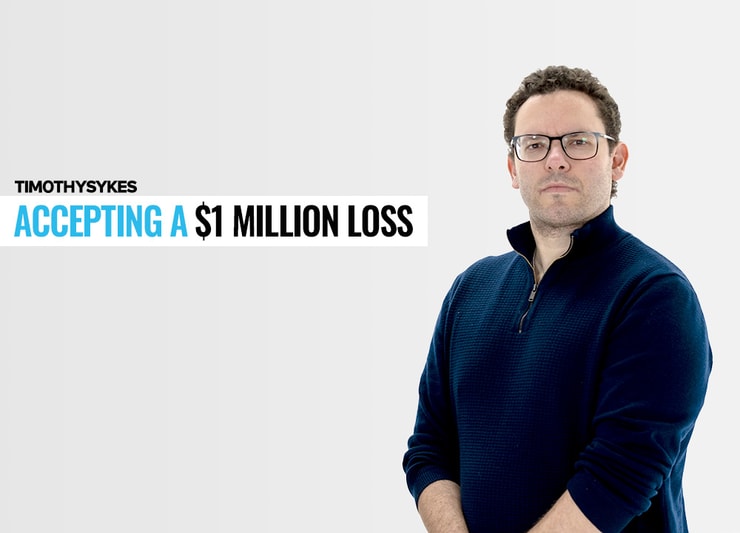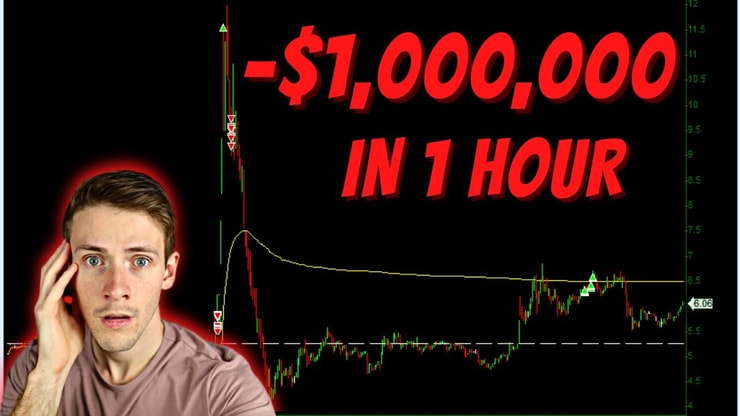Losing sucks.
Losing $1 Million is torture.
David Hanlin stared down this nightmare.
Not only did he survive, but he shared his experience at our Trading Seminar in Miami and in this full-length YouTube video below.
We are biologically programmed to avoid danger and things that feel bad.
That’s why it’s the BIGGEST HURDLE every trader faces.
I’m going to say something now that everyone needs to hear, and it’s not popular…
YOU NEED TO LEARN TO LOSE
No one can become a successful trader if they deny their losses.
It’s like ignoring your tax bill. Eventually, it catches up with you and is even worse.
If you’ve found yourself in a similar situation in the past, or even right now, know that you’re not alone.
Many, many traders have been there, including me.
Back at the start of my career, I lost a huge chunk of money trying to invest outside my comfort zone.
Know this…
YOU CAN RECOVER
Never doubt this for a second.
It all starts with small steps like the ones I’m about to reveal.
This is how you come back stronger and avoid similar situations in the future.
Don’t Get Too Comfortable

2025 Millionaire Media, LLCMarkets love to lull us into a false sense of comfort…right before they pull the rug out from underneath us.
After a string of winners, it’s natural to want to size up.
But remember, strings of winners are outlier events, just like strings of losers.
Don’t expect them to continue.
In fact, trade scared and prepare for the worst.
That way, when the rug is pulled, you are ready.
On the flip side, and as David highlighted in his video, you can get FOMO as well.
In his case, he felt like he was leaving too much on the table.
So, he sized up and started making more and more money.
Then he ran into Intelligent Living Application Group Inc. (NASDAQ: ILAG).
And as he pointed out in his video, he was willing to risk $200,000.
That’s a big sum, even for the size account he was working with.
He started the day with a nice little win from the short side. But as the stock kept falling, FOMO kicked in, and he wondered if he sold his shares too early.
As emotions took over, he continued to add to his position. Ultimately, even though he knew where his risk and stop were, he found himself with far too many shares sold short than he intended.
In a sense, he got too comfortable.
That’s why it’s important to build regular sanity checks into your trading, even if you are in and out in seconds.
Use calculators, excel spreadsheets, or even take a moment to step back, just to make sure you are where you want to be and not overleveraged.
David told attendees he planned to use a broker-level max loss going forward.
That would mean his broker would exit his trades at the market should his losses exceed a certain point.
Most of us can mentally or programmatically have these for each trading day or week. Doing this limits the potential damage any one trade can inflict.
Trust me, it feels awful to stop yourself from trading because you hit your max loss threshold. But in the long run, it will keep more money in your account.
Learn to Move on

2025 Millionaire Media, LLCAt some point, the trade is over, and you’re left with the aftermath.
You aren’t a failure.
Traders make mistakes, many of them far worse than you did.
What you need to do is understand where and how the mistake happened.
Then, determine whether it’s something you can control or not.
For example, none of us can control FOMO. It happens.
But, you can reduce its impact by limiting chat during certain times.
Or, you can choose to only trade during certain times of the day.
On the other hand, you can control the number of shares and risk you take.
Some platforms allow you to add prompts or restrict the number of shares or size.
As a protection mechanism, you can also drop in your stop loss orders immediately after your entry.
Ultimately, you have to decide what works best for your strategy and sanity.
But if there’s one phrase I want you to take with you, it’s this…
Keep your losses small and take them fast!
—Tim









Leave a reply